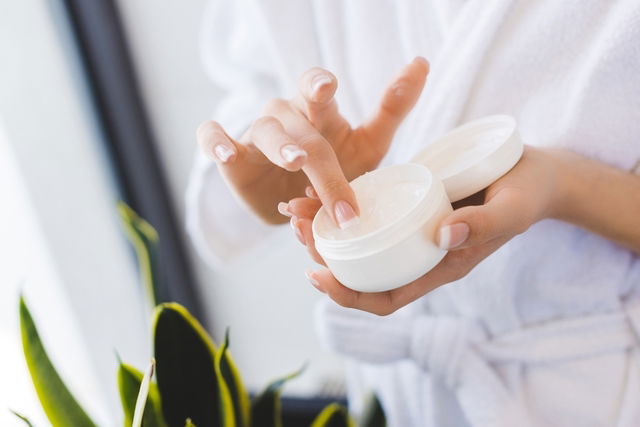Tretinoin is a substance derived from Vitamin A and is frequently added to creams to reduce skin imperfections, wrinkles and acne. This type of cream, also referred to as retinoic acid, can improve the quality of skin collagen and can also increase skin firmness, decrease oil production and improve healing of the skin.
Creams with tretinoin can be accessed with a prescription at the pharmacy in doses that vary between 0.01% and 0.1%. It is usually prescribed by a dermatologist depending on treatment goals. Tretinoin can also be used as a chemical peel in concentrations between 1 and 5%, as well as for exfoliation so that a new, healthier skin layer can be generated.
In addition, tretinoin can also be easily found in low doses in regular creams. Be sure to use these types of creams as instructed on the package.

Health benefits
Tretinoin can be beneficial for the treatment of:
- Acne
- Dark spots
- Freckles
- Melasma
- Loose or rough skin
- Smoothen wrinkles
- Acne scars
- Recent stretch marks
- Scars or other skin irregularities
Tretinoin can be used on its own or combined with other substances to optimize its effect, like hydroquinone or fluocinolone acetonide.
It is important to remember that higher doses of tretinoin can be used in chemotherapy, as indicated by the oncologist, for treatment of certain types of cancer, like bone marrow and different types of blood cancers. Doses of tretinoin need to be very high to ensure cancer cell death.
How to use it
The effects of tretinoin on the skin can be obtained in the following ways:
1. Topical use
This is the main way that tretinoin is used and comes in a cream or gel form. Doses are usually set between 0.01% and 0.1%. Topical forms are applied once or twice a day to the face or to the skin area as indicated by the dermatologist.
Creams or gels should be a applied as a thin layer and rubbed into the skin carefully. It should only be applied to the face after washing the skin with soap and water, and drying with a clean towel.
2. Chemical peel
Tretinoin can be used in chemical peel treatments by trained estheticians or dermatologist. This peel exfoliates the first, most outer layer of the skin, stimulating growth of new skin cells that are smoother, softer and more uniform.
The chemical peel is a deep treatment that leads to faster and more visible results than creams
Possible side effects
Tretinoin can also have some disadvantages and unwanted side effects. Some of the most common ones include:
- Local redness to the area where applied
- Over-exfoliation of the skin, leading to peeling or flaking
- Burning or feeling of bites in the area where applied
- Dry skin
- Small lumps or colored blotches
- Swelling to the area where applied
If you experience intense symptoms, you should discontinue the use of tretinoin immediately and see your doctor or dermatologist to assess the need for a dose change or an alternative product.
Side-effects will occur more frequently when higher concentrations of the substance are used, as is the case with 0.1% creams.
